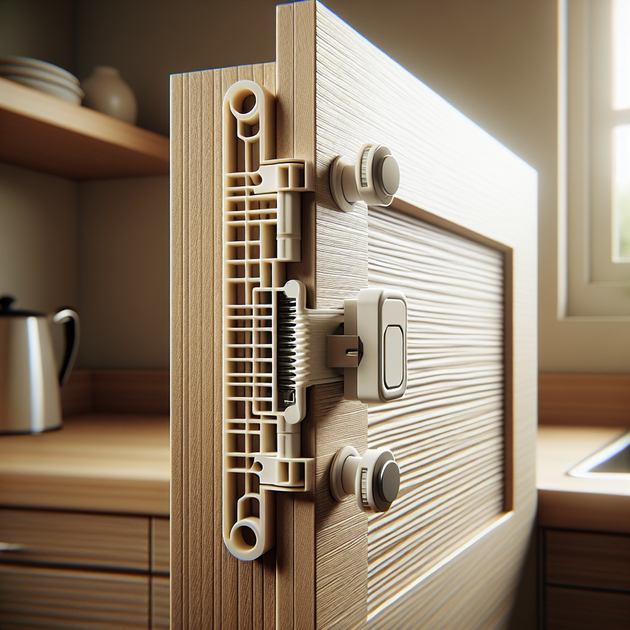Have you ever noticed how some of the best solutions are also the simplest? When it comes to keeping cabinets or small doors secure, sometimes all you need is a basic sliding lock and locking latch—no fancy gadgets or expensive hardware required.
What Is a Sliding Lock & Why Use One?
A sliding lock is one of those classic pieces of hardware that just works. It’s a straightforward mechanism where a bar slides into place behind a bracket or catch, holding a door or panel shut until you manually slide it open again. This kind of setup is perfect for anyone who wants to add an extra layer of security to cabinets, toolboxes, or even small outdoor sheds.
But here’s the cool part—now you don’t even have to buy one from a store. Thanks to creators like Matthew-Ghost on MakerWorld (see their model here), you can 3D print your own sliding lock right at home. That means customizing the size and shape you need without waiting on shipping or spending extra cash.
Key Benefits of Using a Sliding Lock
Why choose a sliding lock over other types of latches? Here are some reasons they’re such a popular choice:
- Simple installation: Most designs require just a few screws to mount.
- No electronics: No batteries to replace or complicated wiring.
- Customizable: With 3D printing files now available online, you can tweak the design if needed.
- Affordable: Printing your own—or buying one—is usually much cheaper than electronic locks.
- Reliable security: For interior doors, cabinets, or boxes that just need to stay closed.
If you’re new to 3D printing or want inspiration for your next project, check out plenty of downloadable designs on sites like MakerWorld. Many models include detailed instructions so even beginners can get started.
How Does This Sliding Lock Work?
The basic principle behind a sliding lock is purely mechanical—no keys, wires, or apps required. Here’s how Matthew-Ghost’s design breaks it down:
– The main body attaches securely to your cabinet frame or door.
– A sliding bolt fits snugly inside the body.
– When you push the bolt into place, it catches behind a bracket (the “locking latch”), holding everything firmly closed.
– To open it again, just slide the bolt back out.
Many 3D printed versions allow you to choose different colors or finishes depending on your printer filament. Want something subtle in white or bold in bright red? It’s totally up to you.
Real-Life Example: Solving Common Problems with a Sliding Lock
A friend recently mentioned struggling with toddlers constantly getting into kitchen drawers where cleaning supplies are stored. Rather than investing in expensive child-proofing gadgets that are tricky for adults but tempting puzzles for kids, she printed out this simple sliding lock model from MakerWorld. Installation took about ten minutes with just a screwdriver. The drawers now stay shut—and adults can open them easily when needed.
This isn’t just limited to child safety either. Maybe you’ve got roommates who keep borrowing your tools without asking (we’ve all been there). A quick-install locking latch lets you control access without complicated setups.
Where Can You Use This Kind of Latch?
Sliding locks work in all sorts of places around the house and beyond:
- Kitchens (cabinets with chemicals)
- Sheds (tool storage)
- Bureaus & dressers (privacy drawers)
- Cupboards & pantries (snack control!)
- Pet supply storage
- Laptop/tool cases
And since many designs are open-source and free for personal use (as found on MakerWorld), there’s no reason not to try one out if you have access to a printer.
A Small Project With Big Payoff
Sometimes it’s not about reinventing the wheel—it’s about making everyday life just a little bit easier. Whether you’re keeping curious kids safe or protecting your favorite tools from wandering hands, adding a simple sliding lock is an effective upgrade anyone can handle.
So here’s something to consider: What small area in your home could benefit from an extra touch of security? Maybe it’s time to give one of these clever latches a try!

Leave a Reply